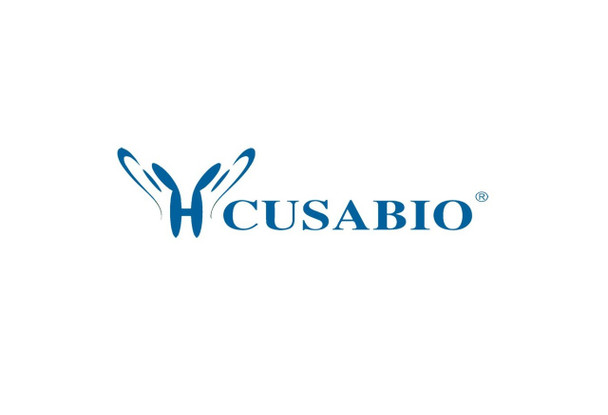Cusabio Human Recombinants
Recombinant Human ATP synthase subunit delta, mitochondrial (ATP5D) | CSB-EP002355HU
- SKU:
- CSB-EP002355HU
- Availability:
- 3 - 7 Working Days
Description
Recombinant Human ATP synthase subunit delta, mitochondrial (ATP5D) | CSB-EP002355HU | Cusabio
Alternative Name(s): F-ATPase delta subunit
Gene Names: ATP5D
Research Areas: Metabolism
Organism: Homo sapiens (Human)
AA Sequence: AEAAAAPAAASGPNQMSFTFASPTQVFFNGANVRQVDVPTLTGAFGILAAHVPTLQVLRPGLVVVHAEDGTTSKYFVSSGSIAVNADSSVQLLAEEAVTLDMLDLGAAKANLEKAQAELVGTADEATRAEIQIRIEANEALVKALE
Source: E.coli
Tag Info: N-terminal 6xHis-SUMO-tagged
Expression Region: 23-168aa
Sequence Info: Full Length of Mature Protein
MW: 31 kDa
Purity: Greater than 90% as determined by SDS-PAGE.
Relevance: Mitochondrial mbrane ATP synthase (F1F0 ATP synthase or Complex V) produces ATP from ADP in the presence of a proton gradient across the mbrane which is generated by electron transport complexes of the respiratory chain. F-type ATPases consist of two structural domains, F1 - containing the extrambraneous catalytic core, and F0 - containing the mbrane proton channel, linked together by a central stalk and a peripheral stalk. During catalysis, ATP turnover in the catalytic domain of F1 is coupled via a rotary mechanism of the central stalk subunits to proton translocation. Part of the complex F1 domain and of the central stalk which is part of the complex rotary elent. Rotation of the central stalk against the surrounding alpha3beta3 subunits leads to hydrolysis of ATP in three separate catalytic sites on the beta subunits.
Reference: Molecular cloning of an import precursor of the delta-subunit of the human mitochondrial ATP synthase complex.Jordan E.M., Breen G.A.M.Biochim. Biophys. Acta 1130:123-126(1992)
Storage: The shelf life is related to many factors, storage state, buffer ingredients, storage temperature and the stability of the protein itself. Generally, the shelf life of liquid form is 6 months at -20?/-80?. The shelf life of lyophilized form is 12 months at -20?/-80?.
Notes: Repeated freezing and thawing is not recommended. Store working aliquots at 4? for up to one week.
Function: Mitochondrial membrane ATP synthase (F(1)F(0) ATP synthase or Complex V) produces ATP from ADP in the presence of a proton gradient across the membrane which is generated by electron transport complexes of the respiratory chain. F-type ATPases consist of two structural domains, F(1) - containing the extramembraneous catalytic core, and F(0) - containing the membrane proton channel, linked together by a central stalk and a peripheral stalk. During catalysis, ATP turnover in the catalytic domain of F(1) is coupled via a rotary mechanism of the central stalk subunits to proton translocation. Part of the complex F(1) domain and of the central stalk which is part of the complex rotary element. Rotation of the central stalk against the surrounding alpha(3)beta(3) subunits leads to hydrolysis of ATP in three separate catalytic sites on the beta subunits.
Involvement in disease:
Subcellular Location: Mitochondrion, Mitochondrion inner membrane
Protein Families: ATPase epsilon chain family
Tissue Specificity:
Paythway: OxidativePhosphorylation
Form: Liquid or Lyophilized powder
Buffer: If the delivery form is liquid, the default storage buffer is Tris/PBS-based buffer, 5%-50% glycerol. If the delivery form is lyophilized powder, the buffer before lyophilization is Tris/PBS-based buffer, 6% Trehalose, pH 8.0.
Reconstitution: We recommend that this vial be briefly centrifuged prior to opening to bring the contents to the bottom. Please reconstitute protein in deionized sterile water to a concentration of 0.1-1.0 mg/mL.We recommend to add 5-50% of glycerol (final concentration) and aliquot for long-term storage at -20?/-80?. Our default final concentration of glycerol is 50%. Customers could use it as reference.
Uniprot ID: P30049
HGNC Database Link: HGNC
UniGene Database Link: UniGene
KEGG Database Link: KEGG
STRING Database Link: STRING
OMIM Database Link: OMIM









